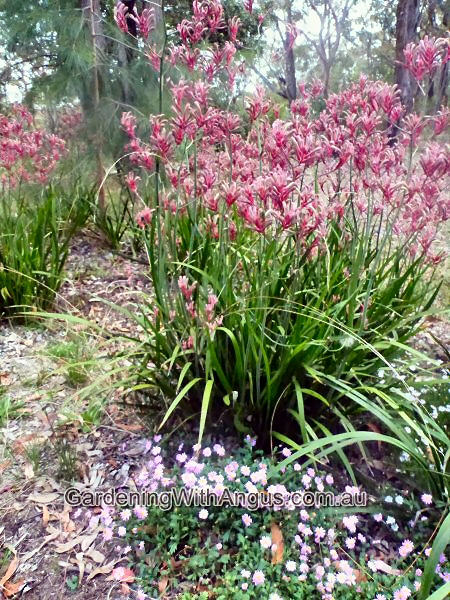This wild species kangaroo paw is the most reliable and long lived of this group. The leathery, dark green leaves are very tough and tend to hold up better against ink spot than all other kangaroo paws. There are numerous colour and height forms of this species as you will see illlustrated here. Make sure you find a good colour form as it is great bird attracting garden plant that can be a feature at the back of beds. Remove the dead flower stems and their associated foliage after flowering.
Anigozanthos flavidus – Kangaroo Paw

Family : Haemodoraceae
Cultivar Name:
Plant Type : Clumping perennial, Bulb or bulb-like
Width : 2
Flowering Time : Spring, Summer
Soil Type : Sandy, Clay, Loamy, Sandy loam, Clay loam, Potting mix, Poor soil
Climate Zone : Sub-tropical, Warm temperate, Cool temperate, Mediterranean
Growth Habit : Evergreen, Column-shaped
Soil Moisture : Dry, Well-drained, Moist moderate drainage
Special Uses : Cut flower, Erosion control, Fast growing, Playground friendly
Scientific Name: Anigozanthos flavidus
Common Name : Kangaroo Paw
Height : 3
Flower Color : Yellow, Red, Pink, Green, Orange, Purple, Mauve
pH Level : Acid, Neutral, Alkaline
Plant Environment : Low maintenance garden, Cottage garden, Flower garden, Coastal garden, Drought resistant
Light : Sunny, Light shade
Lifespan : Perennial
Frost Tolerance : Tolerates light frost
Attracts Wildlife : Nectar eating birds

